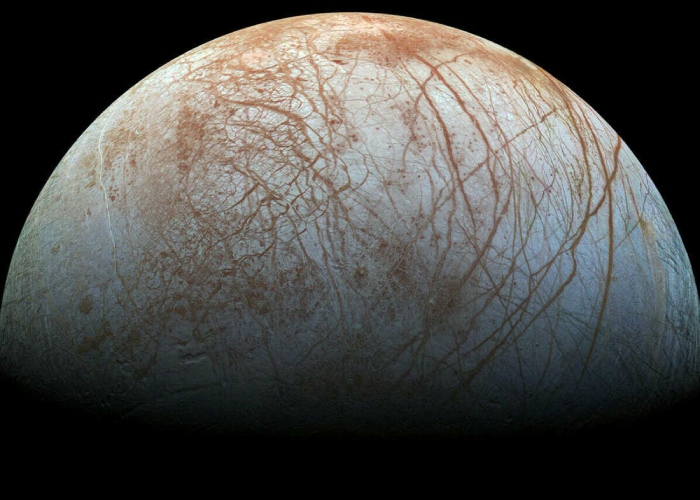Recent data from the James Webb Space Telescope have provided intriguing insights into Europa, one of Jupiter’s moons. Notably, the telescope has identified the presence of carbon dioxide on Europa’s surface, adding to its known features like water and a potentially global ocean beneath its ice layer. These findings open up a realm of exciting possibilities and increase the moon’s significance in the ongoing search for extraterrestrial life.
Breaking Down the New Discoveries
Europa, already known for its ice-covered surface and suspected subsurface ocean, now adds CO₂ to its list of intriguing characteristics. This could either be external or could have originated from beneath the moon’s icy shell. Two plausible theories exist: one suggests that Europa’s ocean might be rich in dissolved CO₂, similar to Earth’s oceans. The other, more captivating theory posits that the CO₂ could be the byproduct of the breakdown of organic compounds like amino acids. Concentrations of this gas have been found in an area named Tara Regio and are believed to be relatively recent developments. Due to the moon’s existing conditions, these CO₂ deposits don’t remain stable for long periods.

Europa’s Role in the Extraterrestrial Quest
Europa is one of a handful of celestial bodies in our solar system believed to have subsurface oceans—others include Jupiter’s moon Ganymede and Saturn’s moon Enceladus. Additional candidates like Callisto, another of Jupiter’s moons, and Titan of Saturn are also considered contenders but with less definitive evidence. These oceans beneath the ice were first hinted at more than 25 years ago when the Galileo probe sent back images of Europa’s surface features, described as “ice rafts.” These rafts, along with other observational data, suggest that Europa’s ice shell could be quite thin, covering an ocean estimated to be between 80 to 150 km deep, possibly holding more water than all of Earth’s oceans combined.